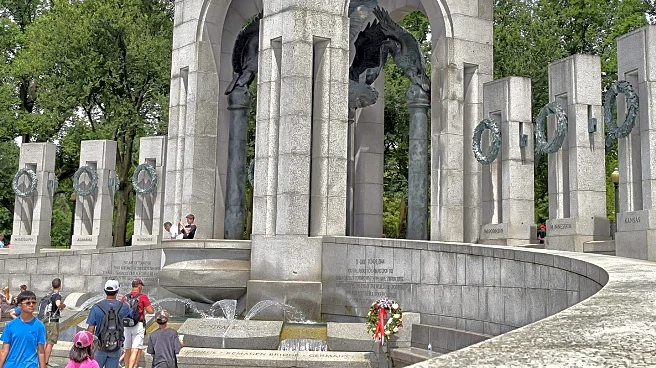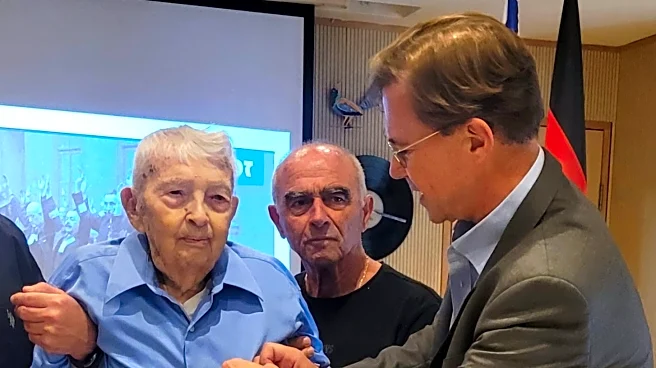What's Happening?
Michael Smuss, a Holocaust survivor known for his role in the Warsaw Ghetto Uprising, has died at the age of 99. Smuss was born in 1926 in Danzig, Poland, and later moved to Lodz and Warsaw. During World
War II, he was imprisoned in the Warsaw Ghetto, where he joined the Jewish resistance led by Mordechai Anielewicz. Smuss contributed to the resistance by making Molotov cocktails, which were used against Nazi soldiers during the uprising. After surviving the war, Smuss moved to the U.S. and later to Israel, where he processed his trauma through painting and shared his experiences with younger generations.
Why It's Important?
Michael Smuss's life story is a poignant reminder of the resilience and courage displayed by individuals during the Holocaust. His contributions to the Warsaw Ghetto Uprising highlight the desperate struggle for survival and resistance against oppression. Smuss's post-war efforts to educate others about the Holocaust through art and personal narratives serve as an important legacy in preserving historical memory and promoting awareness of past atrocities. His passing marks the loss of a direct witness to history, emphasizing the need to continue educating future generations about the Holocaust.
Beyond the Headlines
Smuss's artistic endeavors and educational outreach reflect the broader cultural and ethical responsibility to remember and learn from the Holocaust. His work in German schools to confront the descendants of his tormentors illustrates the ongoing dialogue about reconciliation and understanding. The impact of his story extends beyond historical remembrance, influencing contemporary discussions on human rights, tolerance, and the fight against anti-Semitism. Smuss's legacy encourages reflection on the moral imperatives of confronting injustice and promoting peace.













